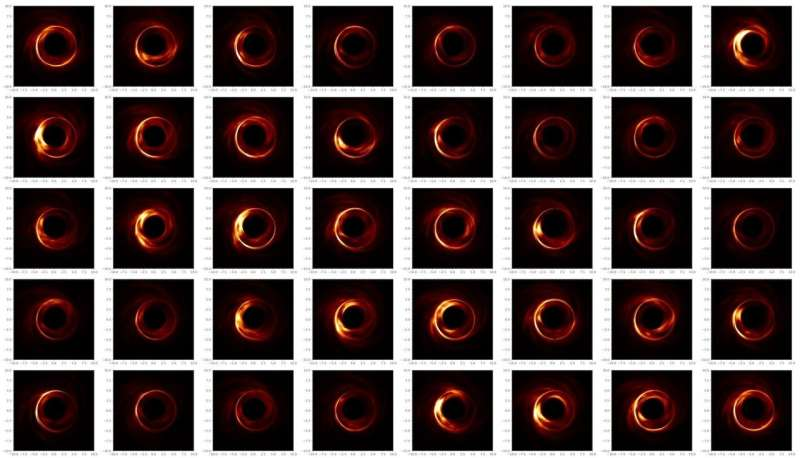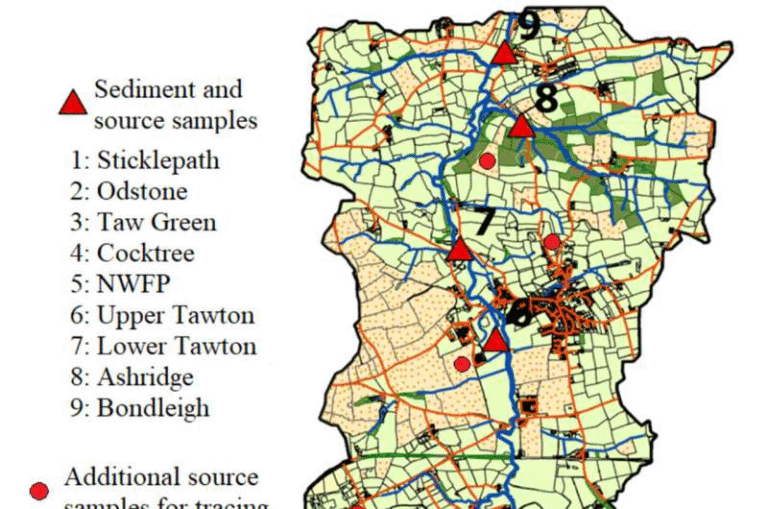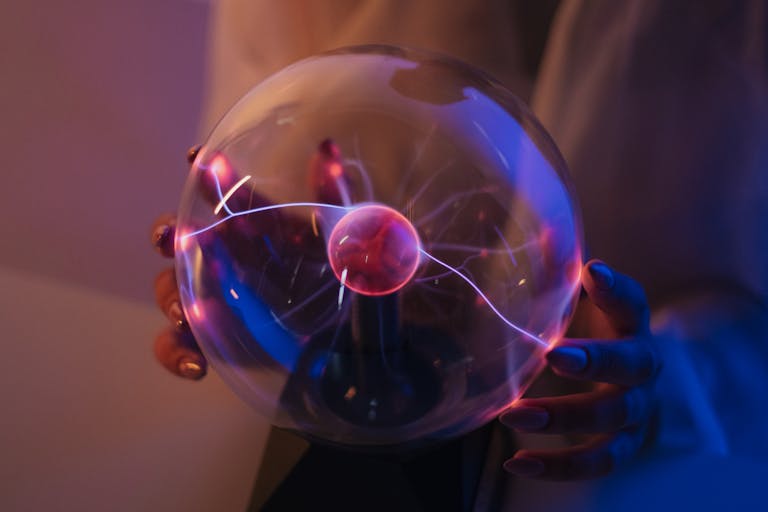Modeling Black Holes Becomes Easier with a Flicker of Light

A new study has taken a fresh approach to understanding one of the universe’s most mysterious phenomena — black holes. Instead of relying solely on heavy, complex simulations, researchers have found that introducing a bit of randomness, or a flicker of light, can actually make black hole modeling more efficient and surprisingly accurate.
This research, led by Sen Guo and colleagues, focuses on a special type of black hole known as a rotating regular black hole, specifically one modeled after the Hayward metric. Regular black holes differ from the traditional Schwarzschild or Kerr models because they don’t contain a singularity — the infinitely dense point that’s long been considered a major problem in classical physics.
Understanding Regular (Non-Singular) Black Holes
In general relativity, black holes are usually described by equations that lead to a singularity at their core. This singularity is where density and gravity become infinite, and the laws of physics as we know them break down. Regular black hole models, such as the Hayward model, were developed to fix that issue.
The Hayward black hole, introduced in 2006, modifies Einstein’s field equations by adding a mathematical condition that prevents a singularity from forming. Instead of an infinitely dense core, it has a finite, non-singular center. The exterior of such a black hole behaves almost exactly like a standard one, which means that to an outside observer, it looks and acts the same as the ones astronomers have already imaged.
Over time, scientists have developed variations of the Hayward model, including rotating versions that more closely resemble real astrophysical black holes, like those at the centers of galaxies. The new study focuses precisely on this — a rotating Hayward black hole — and examines how light behaves around it.
The Role of Flickering Light in Modeling Black Holes
In this latest research, the scientists introduced a statistical simulation of a fluctuating plasma field around the rotating Hayward black hole. This might sound complex, but the idea is similar to how animation studios simulate water or fire without running full-blown physics calculations. Instead of solving every equation for every atom, they use clever tricks that mimic the randomness of nature.
Here, the team simulated the flickering of light emitted from the accretion disk — the swirling, glowing material orbiting just outside the event horizon of the black hole. These flickers represent small, random fluctuations in brightness, similar to the chaotic behavior of plasma and magnetic fields near real black holes.
In traditional black hole models (like the Kerr model), such random flickering tends to average out when you simulate it — the variations blur together and don’t reveal much. However, when the same approach was applied to the Hayward model, the results were different.
Because the Hayward black hole doesn’t have a singularity, it introduces a dynamic structure near its center. The simulated flickers interact with this internal dynamic, leading to patterns of variability that resemble what we’ve actually observed in space.
Connection to Real Observations
One of the most famous black holes ever imaged is M87*, the supermassive black hole in the galaxy Messier 87, captured by the Event Horizon Telescope in 2019. Astronomers noticed that the magnetic field near M87* can shift suddenly, causing parts of the bright ring around it to move. These changes happen quickly and unpredictably.
Previous simulations based on the standard Kerr metric struggled to reproduce this natural shifting without fine-tuning the starting conditions. But the new Hayward-based model does this spontaneously. The magnetic field shifts emerge naturally when the flickering light interacts with the regular black hole’s spacetime geometry.
This means that while the new model doesn’t yet reveal the true physical cause of the magnetic field shifts, it provides a more accurate simulation of black hole behavior as we see it.
The researchers emphasize that this doesn’t solve every mystery. Much like how physicists model friction without describing every single atomic interaction, this flicker-based approach offers a useful approximation of the real dynamics without diving into the ultra-detailed physics of plasma or quantum gravity.
How the Model Works
The study’s approach uses a combination of mathematical modeling and statistical simulation. Instead of running enormous general relativistic magnetohydrodynamics (GRMHD) simulations — which can take weeks or months of computing time — the team applied a spatio-temporal random field model known as a Matérn field.
This allowed them to simulate time-dependent brightness variations (the flickers) across the accretion disk. Each flicker was then tracked using ray-tracing techniques that account for how light bends in the warped spacetime around the black hole.
The team included light-travel time effects, meaning that flickers occurring behind or near the event horizon appear delayed or smeared, mimicking how we would actually see them from Earth. These details helped create realistic time-resolved images of the rotating Hayward black hole and its accretion disk.
When compared with results from full GRMHD simulations, the new model produced similar visual outcomes but with much lower computational cost. That’s a major advantage for astrophysicists trying to explore a large range of black hole conditions without spending massive amounts of computing power.
Why This Research Matters
This new approach could make modeling black holes faster and more flexible, enabling scientists to explore how different parameters affect what we observe. Since the model matches real black hole behavior — like the moving bright ring seen in M87* — it could help interpret future observations.
The absence of a singularity in the Hayward model also opens up new possibilities in theoretical physics. Regular black holes are often linked to ideas from quantum gravity, where spacetime itself might prevent singularities from forming. If the predictions of these models match real data, it could hint that the true nature of black holes is slightly different from what Einstein’s equations originally suggested.
Additionally, this approach is timely. With the next generation of telescopes coming online, such as improved versions of the Event Horizon Telescope and space-based observatories, we’ll soon have even more detailed, time-dependent images of black holes. Being able to model how these objects flicker and evolve over time is becoming increasingly important.
Limitations and Future Prospects
Despite its promise, the study doesn’t explain the physical causes behind all the phenomena it simulates. The flickering is treated statistically — as random noise — rather than being tied directly to the complex physics of plasma turbulence, magnetic reconnection, or jet formation.
Moreover, while the Hayward model avoids singularities, it’s still a hypothetical construct. Observations haven’t yet confirmed whether the cores of real black holes are truly non-singular or whether these models are just useful mathematical tools.
The authors suggest that future work could combine their flicker-based method with more realistic plasma physics, or test it against upcoming high-resolution observations. As instruments improve, scientists might be able to compare time-variable patterns predicted by different models — and possibly rule out some of them.
If such comparisons show that regular black holes match the data better than singular ones, it could mean we’re seeing hints of new physics beyond general relativity.
Why Black Hole Simulations Matter
Black hole modeling isn’t just a theoretical exercise. These simulations are vital for interpreting what telescopes see. The “shadow” images we get from observatories are not direct photographs but complex reconstructions from data gathered by radio telescopes spread across the planet.
To make sense of that data, astronomers compare it to simulations. The better the simulations, the better we can understand what we’re looking at — from how matter moves near the event horizon to how light bends, flickers, and disappears.
This new study adds another powerful tool to that process. By showing that randomness — something as simple as flickering light — can enhance realism and computational efficiency, it opens the door to a new generation of dynamic black hole models that are both accurate and practical.
Final Thoughts
The idea that a flicker of light can make black hole modeling more realistic is both poetic and scientific. It suggests that even the most chaotic, unpredictable parts of nature — random fluctuations of light — can help us understand the deepest mysteries of the cosmos.
If the Hayward model and similar non-singular theories continue to align with observations, we may be on the edge of a new understanding of what happens beyond the event horizon.
Research Paper: Image of a Time-Dependent Rotating Regular Black Hole by Sen Guo et al., arXiv (2025)





